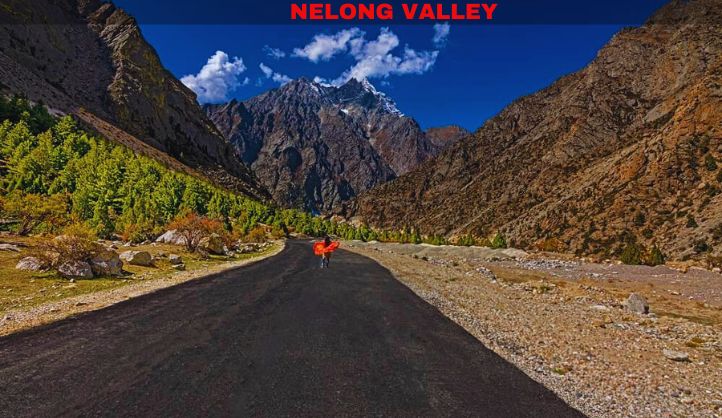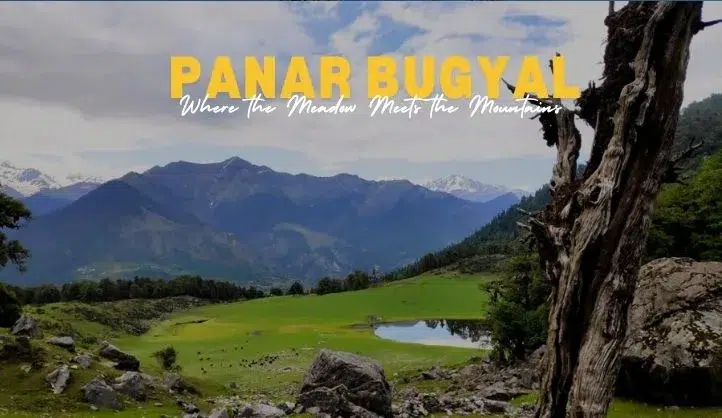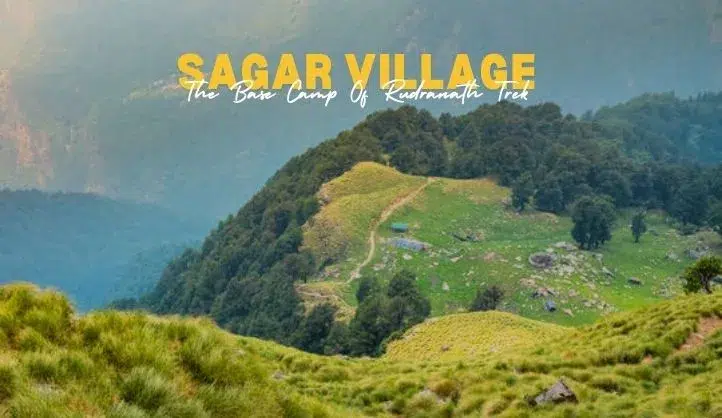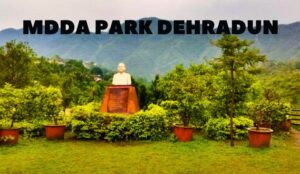Nestled amidst the towering Himalayas in Uttarakhand, Nelong Valley is a hidden gem waiting to be explored. Often dubbed the “Ladakh of Uttarakhand,” this valley offers a breathtaking blend of stark beauty, rich history, and strategic significance. Perched at an altitude of over 11,000 feet, Nelong Valley is a land of stark landscapes, cold desert winds, and a panorama that will leave you speechless.
A Valley Steeped in History
Nelong Valley’s past is as fascinating as its landscape. Long before the political tensions of today, Nelong served as a crucial trade route between India and Tibet. The ancient wooden bridge, Gartang Gali, stands as a testament to this bygone era. Experts claim the valley bears an uncanny resemblance to the Tibetan plateau, and those who have visited both locations are often struck by the similarities.
It also shares similarities with other famed Himalayan destinations like Lahaul-Spiti and Ladakh. However, the 1962 India-China War cast a long shadow over the region. The villages that once thrived here were eventually vacated, and the valley became a sensitive border zone. Today, this is a restricted area, with tourists only allowed for day visits. This adds to the allure of the place, making it a destination for those seeking an off-the-beaten-path adventure.
Map of Nelong Valley
How to Reach Nelong Valley
By Air
The nearest airport to Nelong Valley is the Jolly Grant Airport in Dehradun, Uttarakhand. From Dehradun, you can either hire a taxi or take a bus to reach the nearest town or base camp for Nelong Valley.
By Rail
The nearest major railway station is the Dehradun Railway Station, which is well-connected to major cities across India. From Dehradun, you can proceed by road to reach Nelong Valley.
By Road
It is accessible by road from various towns and cities in Uttarakhand. The journey typically involves driving through mountainous terrain and may require a four-wheel-drive vehicle, especially during inclement weather conditions.
A Landscape of Untamed Beauty
Nelong Valley’s beauty lies in its starkness. The rugged mountains, painted in shades of brown and grey, rise majestically against the clear blue sky. The Jadh Ganga, a tributary of the Bhagirathi River, cuts a dramatic path through the valley floor. The lack of vegetation creates a sense of vastness, making you feel dwarfed by the power of nature.
Exploring Nelong Valley
Reaching this valley is an adventure in itself. The nearest railheads are in Rishikesh and Haridwar, while the Jolly Grant Airport in Dehradun is the closest domestic airport. From these points, you can hire a taxi to reach Bhairav Ghati, the gateway to the valley. However, remember, this is a restricted area. You’ll need special permits from the Uttarkashi District Magistrate’s office to enter.
Once you have your permits in order, you can take a shared jeep from Bhairav Ghati towards Nelong. The journey itself is an experience, offering stunning views of the Himalayas. The road winds through narrow gorges and high mountain passes, giving you a glimpse of the valley’s untamed nature.
Key Attractions in Nelong Valley
Gartang Gali
Gartang Gali is a historic wooden bridge that is a must-see for any visitor to Nelong Valley. It served as a vital trade link between India and Tibet for centuries and stands as a symbol of the region’s rich past.
Indo-Tibetan Border
While tourists cannot venture up to the border itself, reaching the designated viewpoint offers a sense of the strategic significance of the valley. Witnessing the majestic Himalayas stretching towards China is an awe-inspiring experience.
Scenic Beauty
The true beauty of Nelong Valley lies in its landscape. Take time to simply soak in the panoramic views, the clear mountain air, and the serenity of this remote location.
Things to Keep in Mind
- Permits – As mentioned earlier, obtaining permits is mandatory to enter Nelong Valley. Make sure you have all the necessary documentation before embarking on your trip.
- Limited Amenities – It is a restricted area with limited facilities. Pack essentials like food, water, and sun protection.
- Weather – The weather in this can be unpredictable. Be prepared for cold temperatures, strong winds, and even snowfall at higher altitudes.
- Accommodation – Since this is a restricted area, overnight stays are not permitted. Plan your trip as a day trip from nearby towns like Harshil or Gangotri.
Nearby places to explore
Gangotri Glacier
Located about 60 kilometers from Nelong Valley, Gangotri Glacier is the source of the Bhagirathi River, one of the headwaters of the Ganges River. It is a popular pilgrimage destination for Hindus and a place of stunning natural beauty.
Harshil
A small village located on the banks of the Bhagirathi River, Harshil is a popular stopover for pilgrims visiting Gangotri. It offers stunning views of the Himalayas and is a great place to relax and enjoy the fresh mountain air.
Bhairav Ghati
The gateway to Nelong Valley, Bhairav Ghati is a scenic location with towering mountains and lush greenery. It is a good place to break your journey and enjoy the views of the Himalayas.
Yamunotri Dham
Yamunotri Dham is the source of the Yamuna River, another major tributary of the Ganges. It is located about 100 kilometers from Nelong Valley and is a popular pilgrimage destination for Hindus.
Hanuman Chatti
A small temple town located on the way to Yamunotri Dham, Hanuman Chatti is famous for its temple dedicated to Lord Hanuman. It is a beautiful place with stunning views of the surrounding mountains.
Nelong Valley – A Glimpse into a Different World
This is not your typical tourist destination. It’s a place for those seeking adventure, a connection with nature, and a glimpse into a region steeped in history. The stark beauty, the sense of remoteness, and the touch of history make Nelong Valley an unforgettable experience. So, if you’re looking for an off-the-beaten-path adventure in the Himalayas, Nelong Valley awaits! Just remember to plan well, obtain your permits, and be prepared to be captivated by the untamed beauty of this unique corner of India.
Preserving Paradise
As Nelong Valley opens up to tourism, efforts are underway to ensure that this pristine paradise remains untouched for future generations to enjoy. Sustainable tourism practices, eco-friendly initiatives, and responsible travel guidelines are being implemented to minimize the impact of human activity on the fragile ecosystem of the valley. By respecting the natural environment and cultural heritage of this, visitors can help preserve its beauty and integrity for years to come.
Conclusion
In conclusion, Nelong Valley stands as a testament to the raw beauty and untamed wilderness of the Himalayas—a place where time seems to stand still, and nature reigns supreme. Whether you’re an adventure seeker, a nature lover, or a cultural enthusiast, it has something to offer for everyone. So, pack your bags, lace up your boots, and embark on a journey to discover the hidden treasures of this remote Himalayan paradise.
FAQs About Nelong Valley
1. Is Nelong Valley open to tourists?
Yes, Nelong Valley is open to tourists, but visiting the valley requires obtaining permits from the local authorities due to its proximity to the Indo-China border. These permits are typically arranged through registered tour operators or government agencies and may require the submission of identification documents. It’s essential to check current regulations and guidelines before planning a trip to Nelong Valley.
2. What is the best time to visit Nelong Valley?
The best time to visit Nelong Valley is during the summer months, from May to June and September to October when the weather is relatively mild and the valley is accessible. Winter months are typically harsh, with heavy snowfall and freezing temperatures, making travel difficult. It’s advisable to avoid visiting during the monsoon season, from July to August, due to the risk of landslides and road closures.
3. How do I obtain permits to visit Nelong Valley?
Permits to visit Nelong Valley can be obtained through registered tour operators or government agencies. These permits usually require the submission of identification documents such as a valid photo ID and may have specific guidelines and conditions for issuance. It’s recommended to plan ahead and apply for permits well in advance of your planned visit to ensure a smooth and hassle-free experience.
4. What are the transportation options to reach Nelong Valley?
Nelong Valley is accessible by road from various towns and cities in Uttarakhand. Visitors can travel by private vehicle, taxi, or state-run buses to reach the nearest town or base camp for Nelong Valley. From there, arrangements can be made for further transportation, depending on local regulations and accessibility. Due to the rugged terrain, four-wheel-drive vehicles may be necessary for travel in certain areas.
5. Are there accommodation options available in Nelong Valley?
Accommodation options in Nelong Valley are limited due to its remote location and rugged terrain. Visitors may find basic guesthouses or tented camps in nearby towns or base camps, but facilities may be basic. It’s advisable to make arrangements for accommodation and other necessities in advance, especially during peak tourist seasons, to ensure a comfortable stay in the valley.









